After our visit to the Jame’asr Hassanil Bolkiah Mosque, we proceeded to the Royal Regalia Museum (Malay: Bangunan Alat-Alat Kebesaran Diraja), built on the site of the Winston Churchill Memorial Museum (perhaps the only such memorial to Churchill in this part of the world), constructed in 1971.
A fire destroyed the previous roof and the domed roof was built by a Japanese company. The builing was modernized and considerably extended and, on September 30, 1992, was opened as the Royal Regalia Museum which has a profusion of exhibits related to the commemoration of the 25 years of Sultan Hassanal Bolkiah‘s rule of Brunei.
This large gold-domed, semicircular structure is fitted with specially-designed mosaics. Gleaming marble has been used extensively in its interior. The floor is covered with plush carpets and the spectacular, beautifully-lit circular gallery is topped with a mosaic-tiled dome sitting on the cup of the original crescent-shaped building.
Prior to entering, we all removed our shoes. On display at the entrance hall is the huge, stunning Royal Chariot, a winged chariot covered in gold leaf, surrounded by regalia from the royal crowning ceremony, that was used for the parade carrying the Sultan through the streets of the city on the occasion of his 1992 silver jubilee celebration of his coronation in 1968. In front of the chariot are a bevy of headless mannequins dressed in traditional attire.
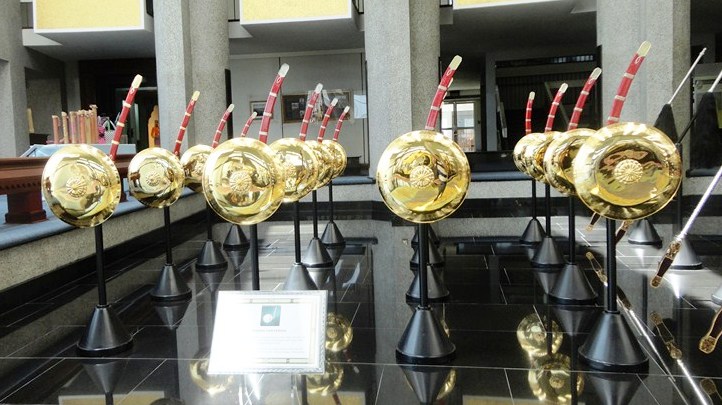
The “pedang dan perisai” are 16 swords, with gold, silver and brass bands on the hilt, and 16 shields that were carried by 16 “awang-awang” (aristocrats)
At the reception desk, we were required to sign our names and nationality in the guest book and then deposit our bags, cameras and mobile phones (photography is only allowed in the lobby) in plastic bins before proceeding on our guided tour. Lockers are also provided free of charge, and you keep the key yourself. A historical review of the present Sultan’s life was then narrated by our guide Mohammad through the Sultan’s family pictures with detailed narrative texts (one particular photograph of interest shows the Sultan smiling at his circumcision ceremony), many of his portraits and a hologram.
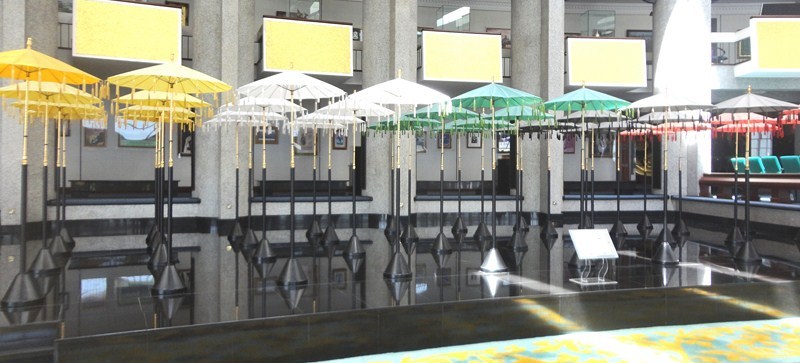
The “payung berwarna” are 40 (8 yellow, 8 green, 8 red, 8 white and 8 black) multi-colored umbrellas with golden tops borne by 40 “awang-awang” (aristocrats) who stand on either side of the area below the “peningkah lapau”
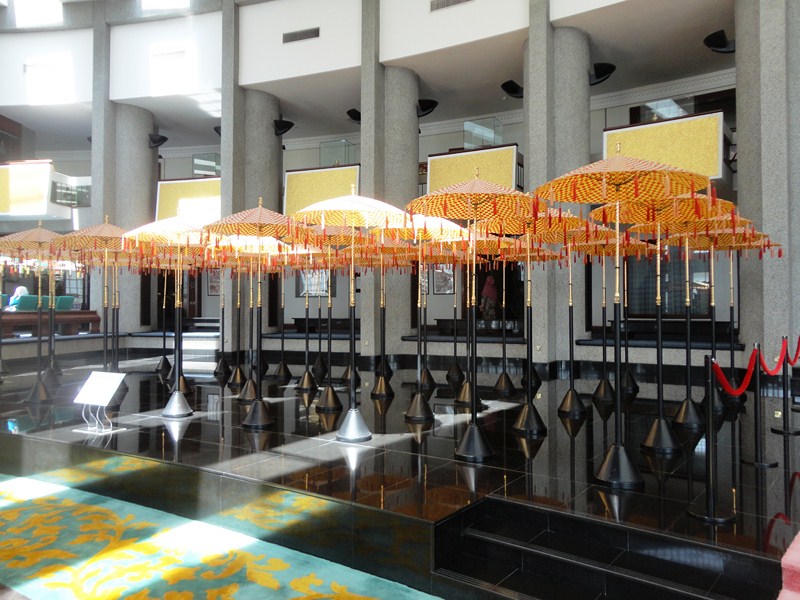
40 “payung kawan” (yellow and red umbrellas) are carried by 40 “orang muda-muda” (the young) who stand at both sides at the area below the “peningkah lapau”
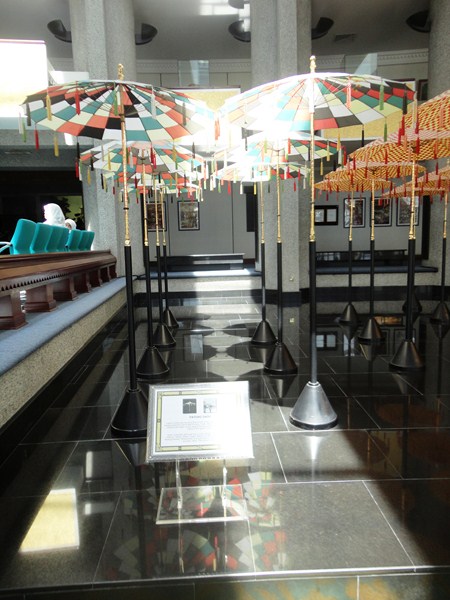
8 “payung dadu” (umbrellas with gold tips) were carried by “awang-awan” (aristocrats) who stand on both sides of the area below the “peningkah lapau”
It recreates his early childhood, chronicling his schooling in Brunei Darussalam, Malaysia and finally in Britain at the Sandhurst Royal Military Academy. Other historic pictures cover independence, the Sultan meeting his people afterwards in the mosque and in the districts; and his return from the Hajj.
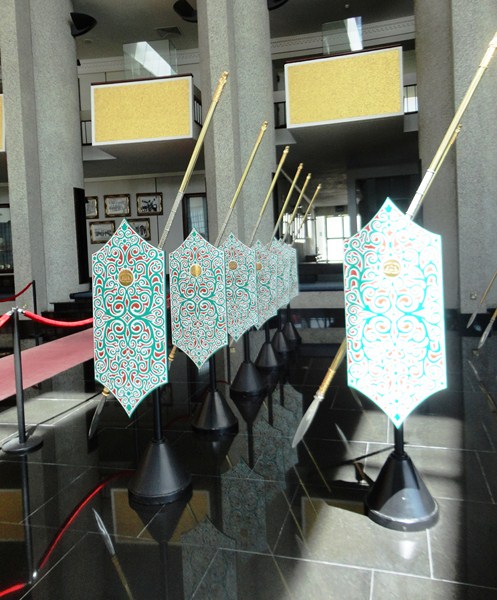
The 6 special “lembing” (royal spears) and “taming” (shields), with golden tips, are borne by 6 “beduanda kecil” (pages)
Film footage of the magnificent ceremony is screened in a small theater. A small room also houses the many military honors and decorations to his military service from well over twenty different countries.
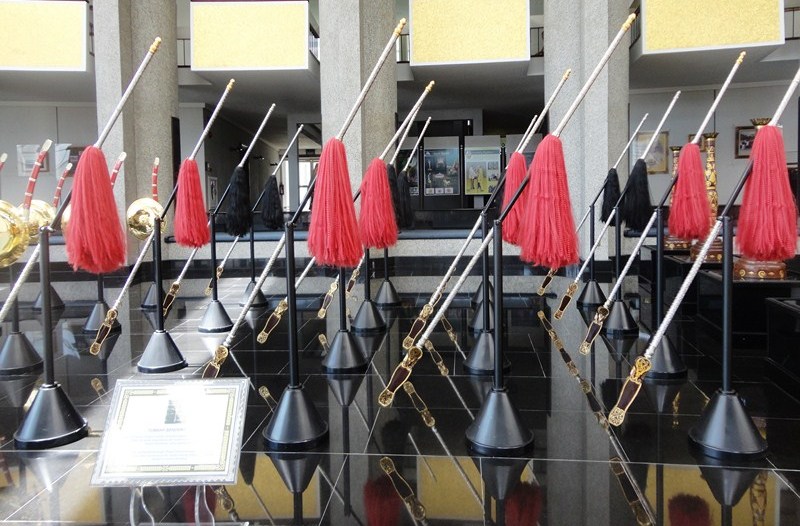
The 16 “tumbak benderangan” (royal ceremonial spears), plated in gold and silver, are borne by 16 “awang-awang” (aristocrats) decked in ceremonial attire
Artifacts that were used for royal ceremonies coronation in the country were also exhibited. They included gold and silver ceremonial weaponry; ornate gold crown embedded with jewels; ceremonial costumes; the symbolic Golden Cats; the silver kris; the Sultan’s costume; a solid golden forearm with upturned palm (which are depicted on the Royal state crest) that the Sultan used as a prop for his chin at his coronation; and orchestral instruments used during the ceremony.
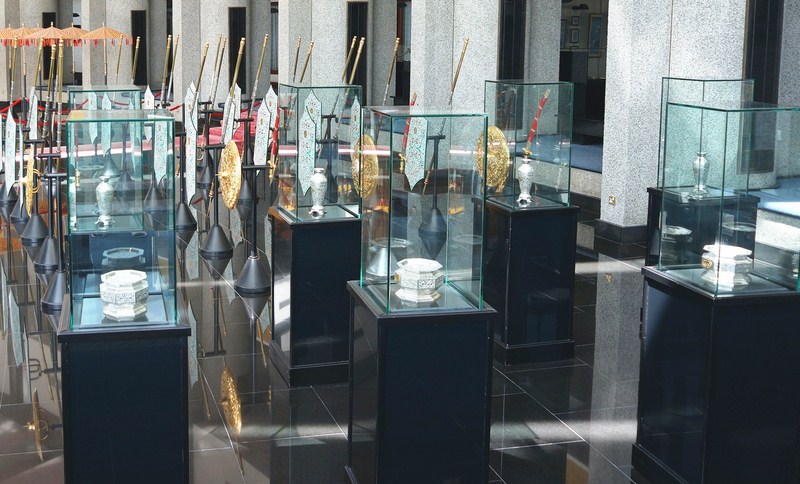
The 4 octagonal “puan kerajaan”” (royal betel boxes), made with silver, are used for keeping flowers and are usually borne by the 4 sons of the “cheterias” (common nobles), in ceremonial attire, on both sides o the “petarana” (throne)
A large side room on the ground floor depicts the 1968 coronation scene at the Lapau using models, pictures, words and exhibits. Inside is an enormous, house-like and more modern (the Sultan’s tiger-skin throne was airconditioned) second chariot, equipped with an engine, which was used in the coronation of the sultan.
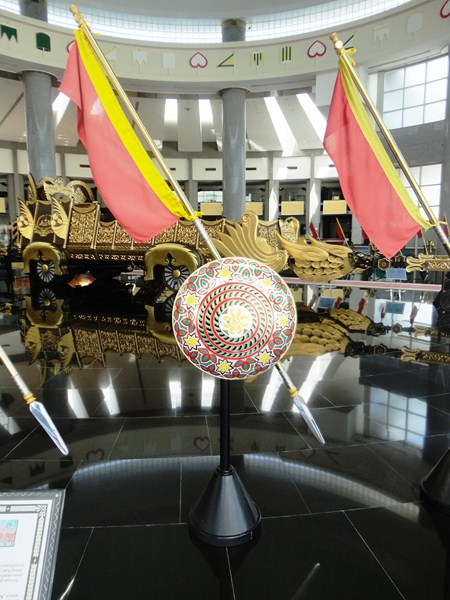
40 “sinipit” (spears) decorated with red “bendera pisang-pisang” at each tip, an 40 “taming” (shields) are carried by 40 warriors in red suits an “dastar”
Rows of life-size mannequin figures, clad in black and red military uniforms, stand proudly in front and behind the chariot. On the outskirts of the room are life-size photographs of adoring onlookers, probably people who were actually in the crowd that day.
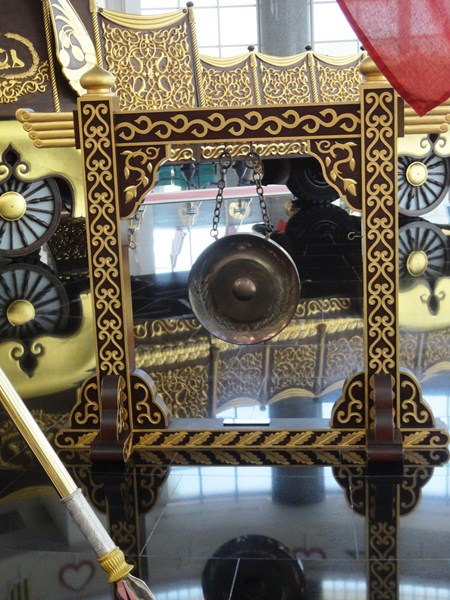
The Chanang is a gong used in the MajlisBerjaga Jaga (before the proclamation and coronation), Gendang Jaga Jaga and other royal ceremonies
There is a scaled replica of the entrance gates of Istana Nurul Iman, the world’s largest residential palace (incidentally designed by my uncle, the late National Artist Arch. Leandro V. Locsin). Also of interest are the costumes worn by the Sultan and his two consorts during the Silver Jubilee. Queen Saleha’s costume is decorated with gold and diamonds while that of Pengiran Isteri Hajah Mariam, the Sultan’s then second wife, is decorated with gold and pearls.
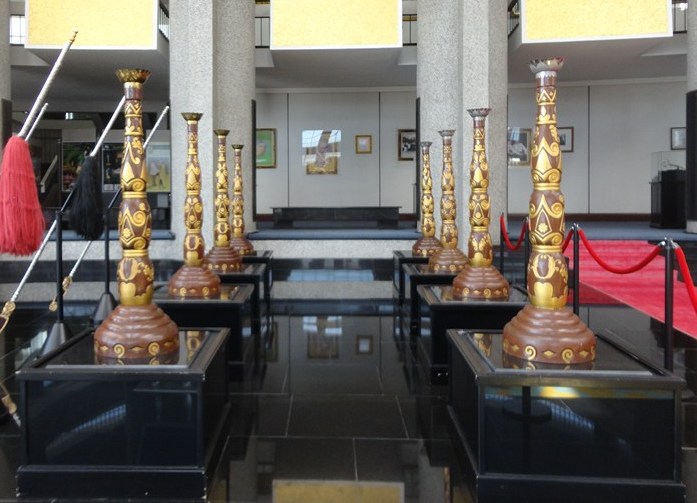
The 8 readily lit Dian Alam Bernaga (candles) are placed before the Petarana (throne), at the time when the Sultan sits on the throne. During the procession, they are borne by 8 Pengarah (overseers).
Also on display are gifts from heads of state to the Sultan. They include gold-plated as well as sparkling glass miniatures of world-famous national landmarks; diamond encrusted vases; delicate porcelain tea sets; ceremonial daggers; stunning wooden carvings;, eye-catching paintings; jewel-encrusted ornaments; commemorative plates with inscribed messages and blessings; objects made from shining silver; ornate coffee tables; decorative glassware; intricate hand-made textiles; and more.
To the left of the main entrance is the Constitutional History Gallery. Set up in 1984 as part of the country’s independence celebrations, it traces the history and development of the constitution – from 1847 when the first Treaty of Friendship and Cooperation was signed with Britain, to the proclamation of the 1959 constitution.
Inside is the signed APAC plaque from the time Brunei held the conference (November 15–16, 2000.) The plaque contains signatures of the APAC members leaders including then US President William “”Bill” Clinton’s.
Royal Regalia Museum: Jln Sultan Omar Ali Saifuddien, Bandar Seri Begawan, BS8611, Brunei. Tel: +673 224 4545 extension 201. Admission is free. Open 9 AM – 5 PM, Sundays – Thursdays, 9-11:30 AM and 2.30 – 5 PM, Fridays (closed 11:30 AM to 2:30 PM for Friday prayer), and 9:45 AM – 5 PM, Saturdays. Last entry at 4.30 PM. You can only take photographs in the lobby and visitors are required to remove their shoes before entering the building.



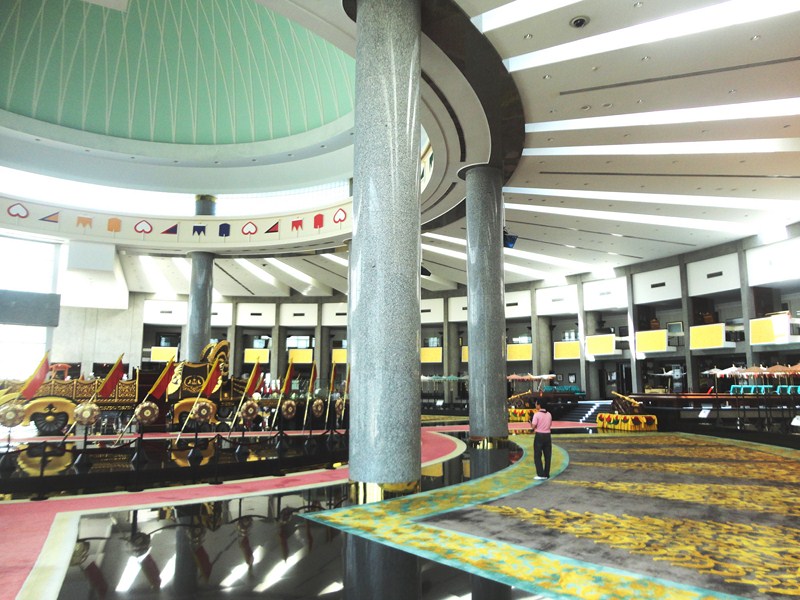
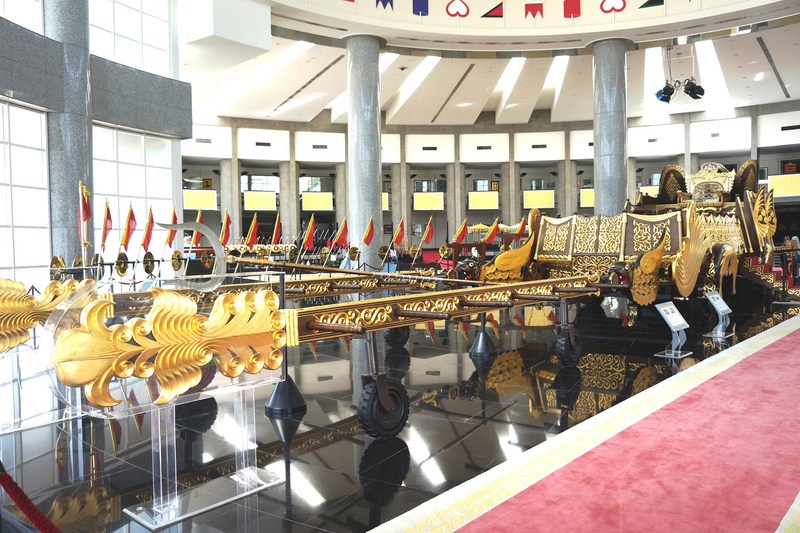
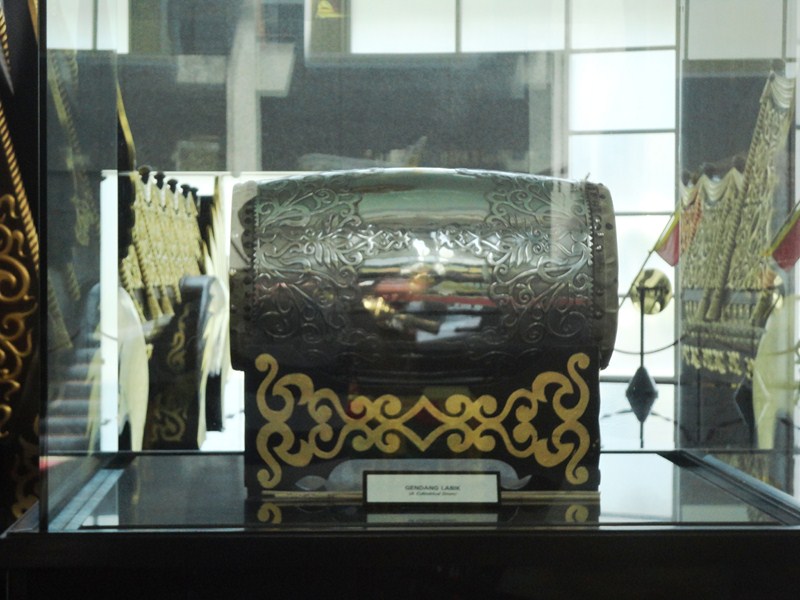
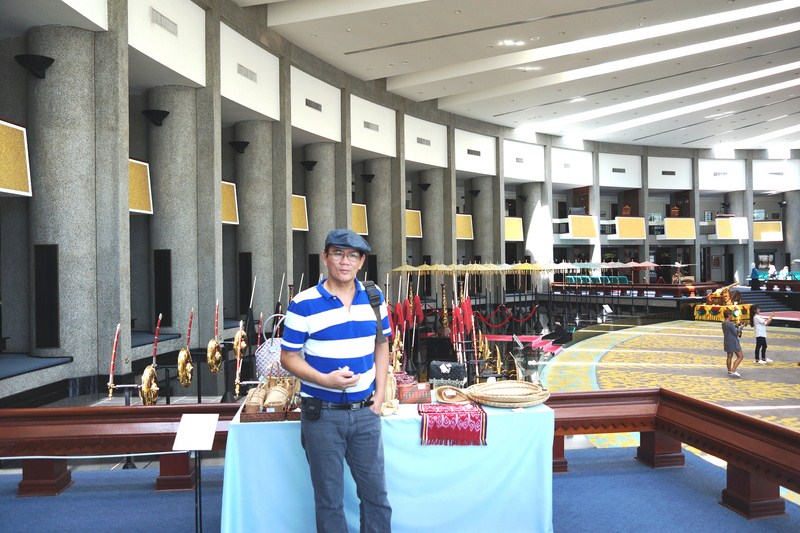
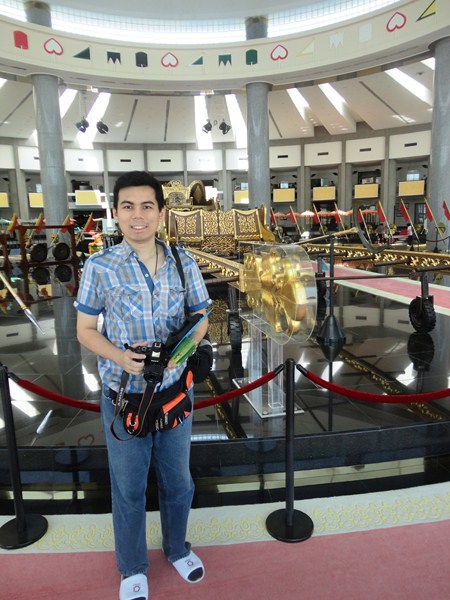
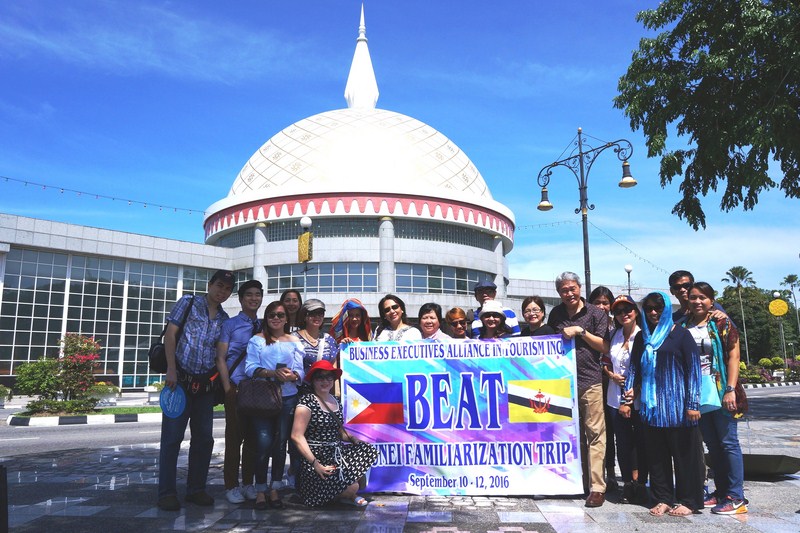
This webpage does nnot display correctly on my blackberry you might want
to try and repair that